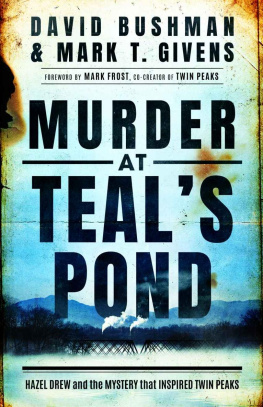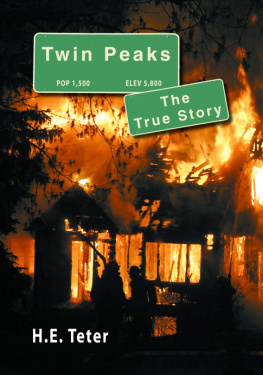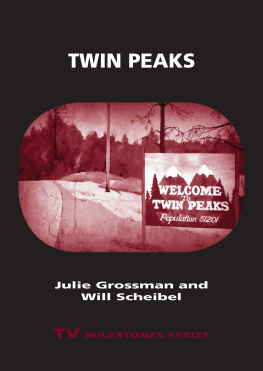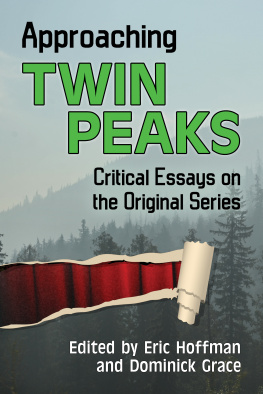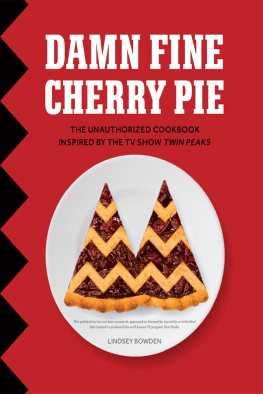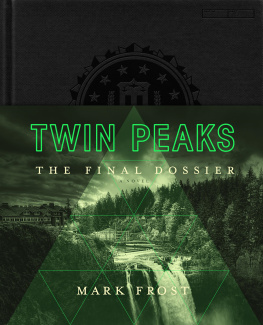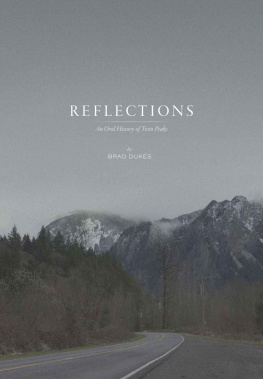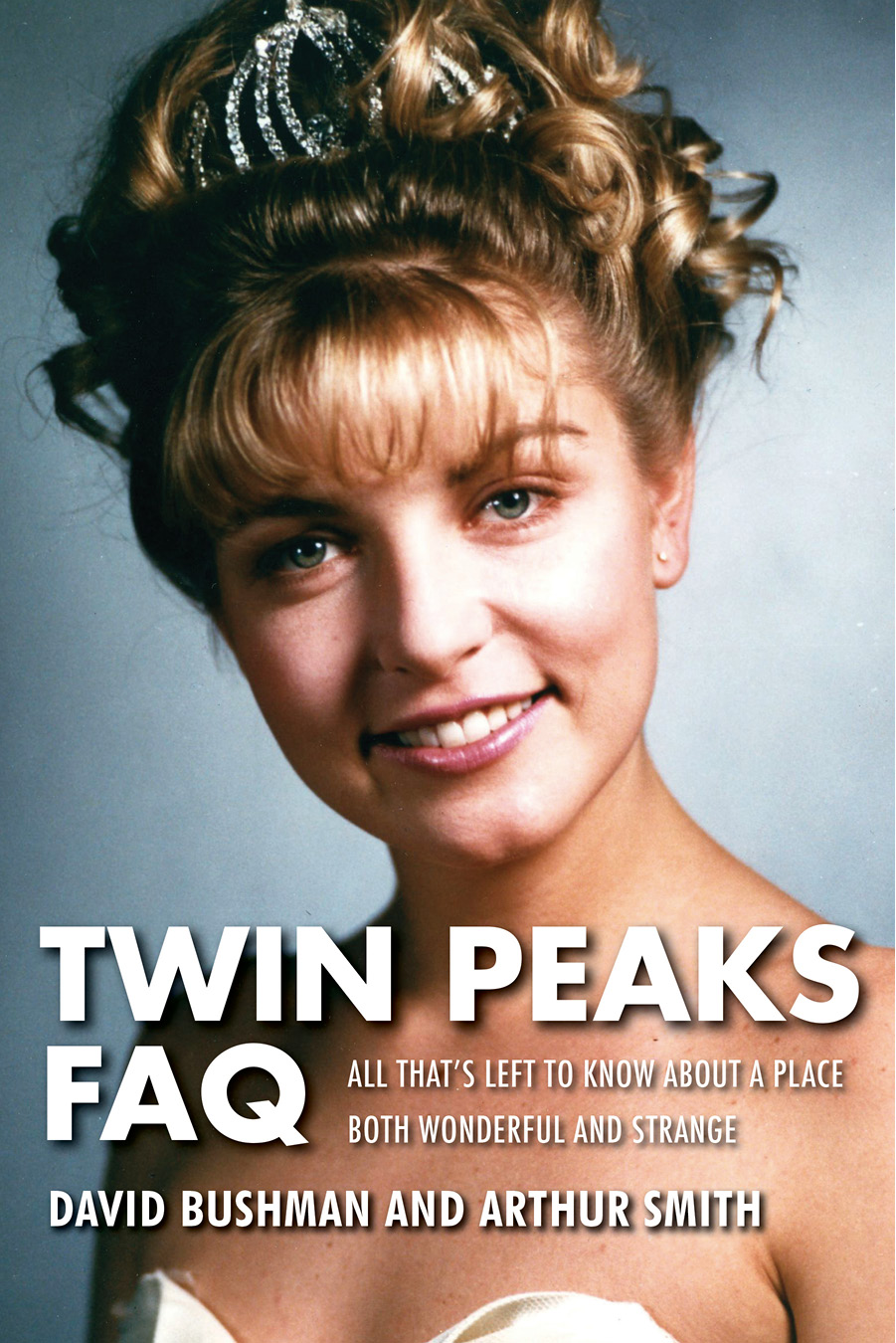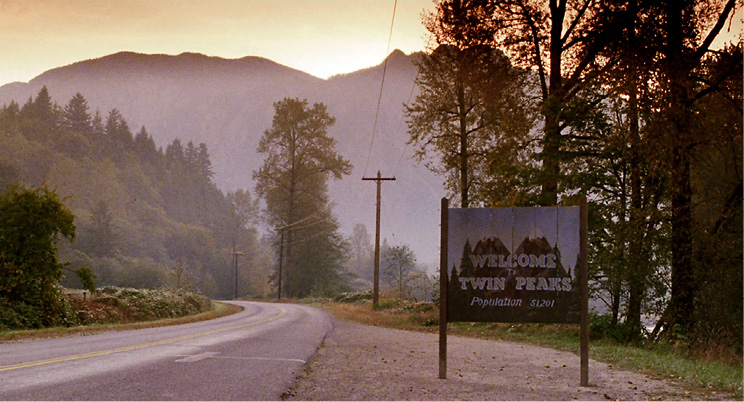Copyright 2016 by David Bushman and Arthur Smith
All rights reserved. No part of this book may be reproduced in any form, without written permission, except by a newspaper or magazine reviewer who wishes to quote brief passages in connection with a review.
Published in 2016 by Applause Theatre & Cinema Books
An Imprint of Hal Leonard Corporation
7777 West Bluemound Road
Milwaukee, WI 53213
Trade Book Division Editorial Offices
33 Plymouth St., Montclair, NJ 07042
All images are from the authors collections unless otherwise noted.
The FAQ series was conceived by Robert Rodriguez and developed with Stuart Shea.
Printed in the United States of America
Book design by Snow Creative Services
Library of Congress Cataloging-in-Publication Data
Names: Bushman, David, 1955 author. | Smith, Arthur, 1971 author.
Title: Twin peaks FAQ : all thats left to know about a place both wonderful and strange / David Bushman and Arthur Smith.
Description: Milwaukee, WI : Applause Theatre & Cinema Books, 2016. | Includes bibliographical references and index.
Identifiers: LCCN 2015042231 | ISBN 9781495015861 (pbk.)
Subjects: LCSH: Twin Peaks (Television program)
Classification: LCC PN1992.77.T88 B77 2016 | DDC 791.45/72dc23
LC record available at http://lccn.loc.gov/2015042231
www.applausebooks.com
For Lynch/Frost... and Pete Martell, who found a fish in the percolator.
Contents
We rely on the kindness of friends. Mitchel Deltuvia, Lucas Gluszak, Ken Mueller, and Benjamin Myers all aided us with the research and fact-checking for this book. We salute them, plus The Paley Center for Medias Jane Klain, the patron saint of researchers. For their assistance with photographs, we thank also Rob S. Wilson, Ellen ONeill, Jerry Ohlingers Movie Materials (especially Dollie Banner), and Photofest (especially Derek Davidson, Todd Ifft, Howard Mandelbaum, and Ron Mandelbaum). We are grateful to everyone who provided images, especially Richard Beymer, who portrayed Benjamin Horne so brilliantly over two seasons and documented the final days on the set with a series of extraordinary photographs, some of which we are fortunate enough to include in this book.
So many people have kept the spirit of Twin Peaks alive over the years with their passion and commitment, and no doubt played a significant role in convincing David Lynch, Mark Frost, and Showtime to revive the show. We are especially indebted to the following Twin Peaks and/or David Lynch experts for their magnificent work in this field over the decades: Brad Dukes, Craig Miller, Greg Olson, Chris Rodley, John Thorne, and everyone at the Twin Peaks Festival, especially Rob and Deanne Lindley.
A very, very special thanks to Pieter Dom (Welcome to Twin Peaks), Scott Ryan (Red Room Podcast), Mischa Cronin (Twin Peaks Archive), and Andreas Halskov for all their insight and expertise, and for never saying no.
We also extend deep gratitude and appreciation to the following for their counsel and support: Peter Byer, Jay Fialkov, Svetlana Katz, Barry Monush, Maria Pagano, Rebecca Paller, and James Sheridan.
Last, but certainly not least, we thank our families for accommodating all of the demands of this project, and for their unwavering support and inspiration: Mariam, Alex, and Scout (for David) and Jenny and Owen (for Arthur).
Introduction:
Ill See You Again in Twenty-Five Years
Are you looking for secrets? Is that it? Maybe I can give you one.
What Twin Peaks Means and Why It Still Matters
Once upon a time, a poorly rated (after its brief tenure as a media sensation) show attracted a cult, excited some critics, and vanished quickly. Its a common tale in network television, a uniquely unforgiving medium that ravenously consumes content while fearfully attempting to appease its sponsors, the corporate purveyors of soap and cars and diet soda who care about nothing but return on investment, the highest number of the most demographically desirable viewers. Promising shows are killed in infancy all the time. Why is Showtime bringing the series back to the screen decades after its cancellation? Whats so special about Twin Peaks ? Why, twenty-five years later, do we still care?
Because Twin Peaks was unique, and its uniqueness stems from the fact that the series, for all of its reveling in lowbrow genre junkiness, was Art. Art with a capital A. Television, at its best, had certainly been artful before Twin Peaks , but never before had prime time featured a work that so thrillingly embraced surrealism, absurdism, and postmodern semiotic playfulness. Never had an American TV show dared such unnerving, alienating elements; such passages of incomprehensible weirdness; such emphasis on mood and texture over narrative clarity; or exalted enigma, formal beauty, and oneiric potency over the comforting tropes that define even its most progressive fellows. Twin Peaks snuck a cornucopia of high-culture rigor and experiment onto the tube, disguising its abstractions and disruptions as an ostensibly familiar soap opera/murder mystery, and demonstrated mainstream, serialized televisions potential as a venue for something beyond well-wrought entertainment.
But maybe thats the sort of thing that excites only critics and academics. What explains the shows lingering effect on normal, reasonable people?
Twin Peaks , like much of cocreator David Lynchs work, has the ability to tap directly into the darkest corners of the receptive viewers subconscious. His faux-nave, intuitive process bypasses the audiences psychic defenses to provoke primal responses impossible to achieve through conventional storytelling techniques. Twin Peaks beguiles with its intriguing oddness, its autumnal beauty, and its cheeky subversion of expectations born of our experience with countless stories of murder, forbidden love, small-town secrets, and heroic knights errant. But the show stays with us because under all of that cleverness and high style, it hits us where we live, rubs up against our most private fears and desires, unsettles us profoundly even as it ensnares us in its gauzy web of seductive lyricism and queasy titillation.
Twin Peaks is a beautiful dream that tells us everything very likely will not be all right, that terrible things will happen and that the world is full of hidden dangers and unspeakable evil. The show is a dark reckoning with an unresolvable mystery: not the identity of Laura Palmers killer, but the origin of the wickedness and cruelty and chaos that exist everywhere if we but look closely enough, even in such an idyllic little community as Twin Peaks.
It tells us this terrible truth, and we cant get enough. Like Laura Palmer, Twin Peaks is an irresistible contradiction, a crucible of beauty and depravity that simultaneously engrosses and repels, delights and disgusts. It gets under your skin and sets up shop in your lizard brain. It haunts you, like a first love lost, the shameful memory of the worst thing youve ever done, a photo in a locket. Its full of secrets, and whispers them close to your ear in a voice both familiar and unsettlingly strange.
Diane, 11:30 a.m. February 24. Entering the town of Twin Peaks...
Notes on Analyzing Twin Peaks : Or How We Learned to Stop Worrying and Love the Mystery



